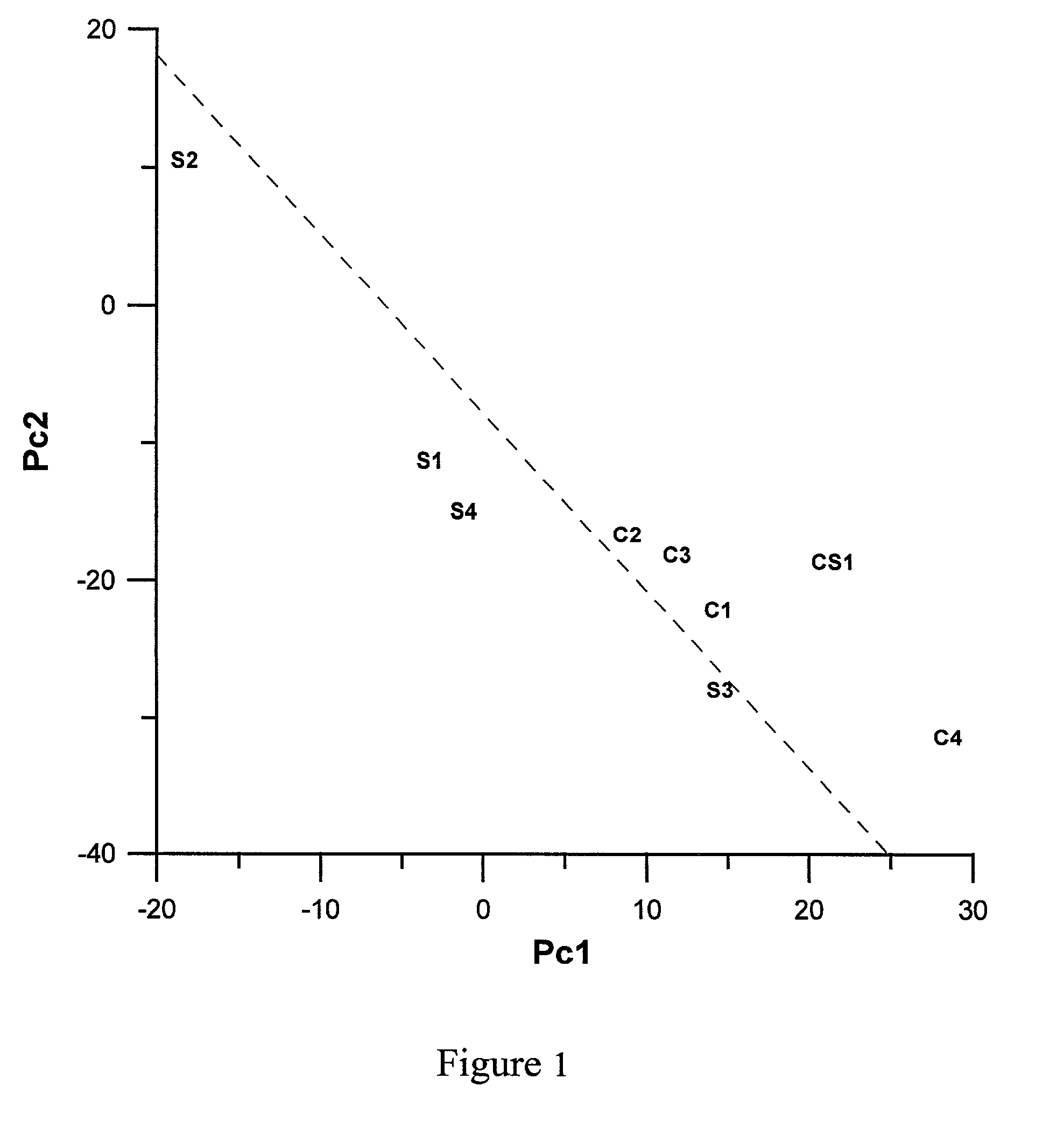Lithium cobalt oxides and methods of making same
a technology of lithium cobalt oxide and cobalt oxide, which is applied in the direction of lithium compounds, calcium/strontium/barium oxides/hydroxides, conductive materials, etc., can solve the problems of reducing the rate of licoo.sub.2 production, and achieve good cycleability properties, good initial specific capacities, and good oxidation resistan
- Summary
- Abstract
- Description
- Claims
- Application Information
AI Technical Summary
Benefits of technology
Problems solved by technology
Method used
Image
Examples
examples
[0045] Sample Preparation
[0046] Stoichiometric amounts of Li2CO3 and Co3O4 with about 2 molar percent in lithium excess were thoroughly mixed and then fired in air as follows:
[0047] Sample S1 was heated at a rate of about 18.degree. C. / min from room temperature to 750.degree. C., held at 750.degree. C. for 1 hour, then heated to 950.degree. C. in about 10 minutes, and held at 950.degree. C. for 4 hours, followed by a rapid cooling to room temperature in about 10 minutes.
[0048] Sample S2 was heated at a rate of about 18.degree. C. / min from room temperature to 800.degree. C., held at 800.degree. C. for 1 hour, then heated to 975.degree. C. in about 10 minutes, and held at 975.degree. C. for 4 hours, followed by a rapid cooling to room temperature in about 10 minutes.
[0049] Sample S3 was heated at a rate of about 5.degree. C. / min from room temperature to 800.degree. C., held at 800.degree. C. for 3 hour, then heated to 975.degree. C. in about 1 hour, and held at 975.degree. C. for 9 ho...
PUM
| Property | Measurement | Unit |
|---|---|---|
| temperature | aaaaa | aaaaa |
| temperature | aaaaa | aaaaa |
| temperature | aaaaa | aaaaa |
Abstract
Description
Claims
Application Information
 Login to View More
Login to View More - R&D
- Intellectual Property
- Life Sciences
- Materials
- Tech Scout
- Unparalleled Data Quality
- Higher Quality Content
- 60% Fewer Hallucinations
Browse by: Latest US Patents, China's latest patents, Technical Efficacy Thesaurus, Application Domain, Technology Topic, Popular Technical Reports.
© 2025 PatSnap. All rights reserved.Legal|Privacy policy|Modern Slavery Act Transparency Statement|Sitemap|About US| Contact US: help@patsnap.com



